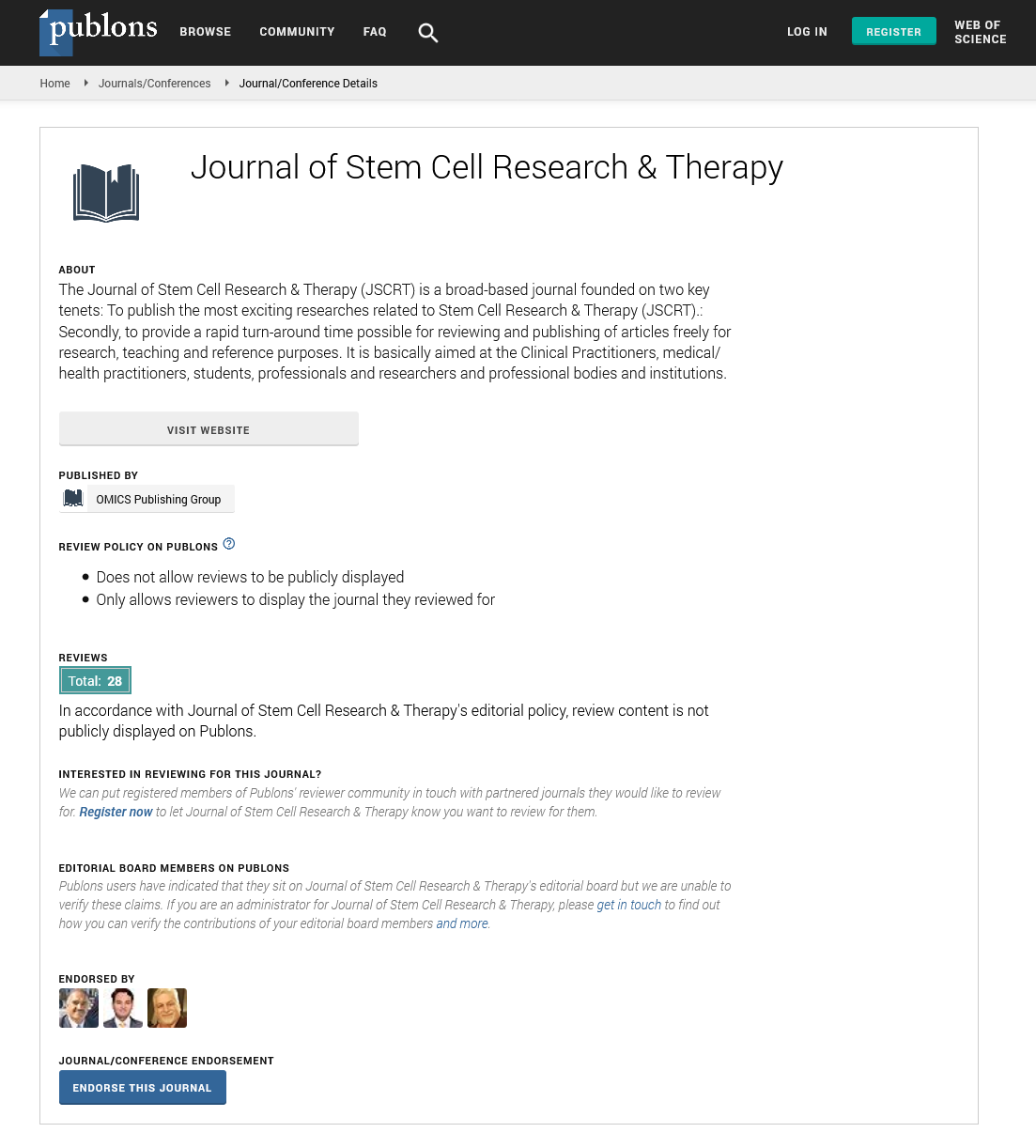Indexed In
- Open J Gate
- Genamics JournalSeek
- Academic Keys
- JournalTOCs
- China National Knowledge Infrastructure (CNKI)
- Ulrich's Periodicals Directory
- RefSeek
- Hamdard University
- EBSCO A-Z
- Directory of Abstract Indexing for Journals
- OCLC- WorldCat
- Publons
- Geneva Foundation for Medical Education and Research
- Euro Pub
- Google Scholar
Useful Links
Share This Page
Journal Flyer

Open Access Journals
- Agri and Aquaculture
- Biochemistry
- Bioinformatics & Systems Biology
- Business & Management
- Chemistry
- Clinical Sciences
- Engineering
- Food & Nutrition
- General Science
- Genetics & Molecular Biology
- Immunology & Microbiology
- Medical Sciences
- Neuroscience & Psychology
- Nursing & Health Care
- Pharmaceutical Sciences
Composite pancreatic organoids for the treatment of insulin-dependent diabetes
5th International Conference and Exhibition on Cell and Gene Therapy
May 19-21, 2016 San Antonio, USA
Henry E Young, Frank Lochner, George McCommon, Lee Anne Cope and Asa C Black
Regeneration Technologies, USA
Cougar Creek Farms, USA
Fort Valley State University, USA
Mercer University School of Medicine, USA
University of South Carolina, USA
Posters & Accepted Abstracts: J Stem Cell Res Ther
Abstract:
Hypothesis: Decellularized pancreatic matrices seeded with endogenous stem cells and donor islets comprise an organoid that demonstrates enhanced insulin secretion in response to a glucose challenge. The adult animals were euthanized following the guidelines of Fort Valley State University-IACUC and Mercer University-IACUC. Adult porcine pancreases were decellularized using a mixture of detergents. Adult rat pancreatic islets were obtained by lipase digestion followed by Ficoll gradient separation. Control cultures consisted of decellularized matrices, naïve endogenous stem cells, and rat islets, all cultured individually. Experimental groups consisted of islets co-cultured with clonal populations of pluripotent and totipotent stem cells seeded on decellularized pancreatic matrices. Control and experimental cultures were challenged with the insulin secretagogue glucose. The control and culture media were removed and stored at -20oC until assayed using a RIA specific for rat insulin. The culture media, containing bovine insulin, were assayed using a RIA specific for rat insulin. No detectable levels of insulin (bovine, rat, human, or porcine) were noted in controls of the media only, the stem cell populations or the decellularized matrices, respectively. Native pancreatic islets secreted nanogram quantities of rat insulin per nanogram of DNA. Composite pancreatic rat organoids demonstrated increased rat insulin secretion in the range of milligram quantities of insulin per nanogram of DNA, i.e., a 250-fold increase in insulin secretion compared to pancreatic islets alone. These studies suggest that composites of native islets, decellularized pancreatic matrices and endogenous pluripotent and totipotent stem cells could provide enhanced secretory tissue for pancreatic islet transplants than donor islets alone.
Biography :
Email: cielocsrodriguez@gmail.com

